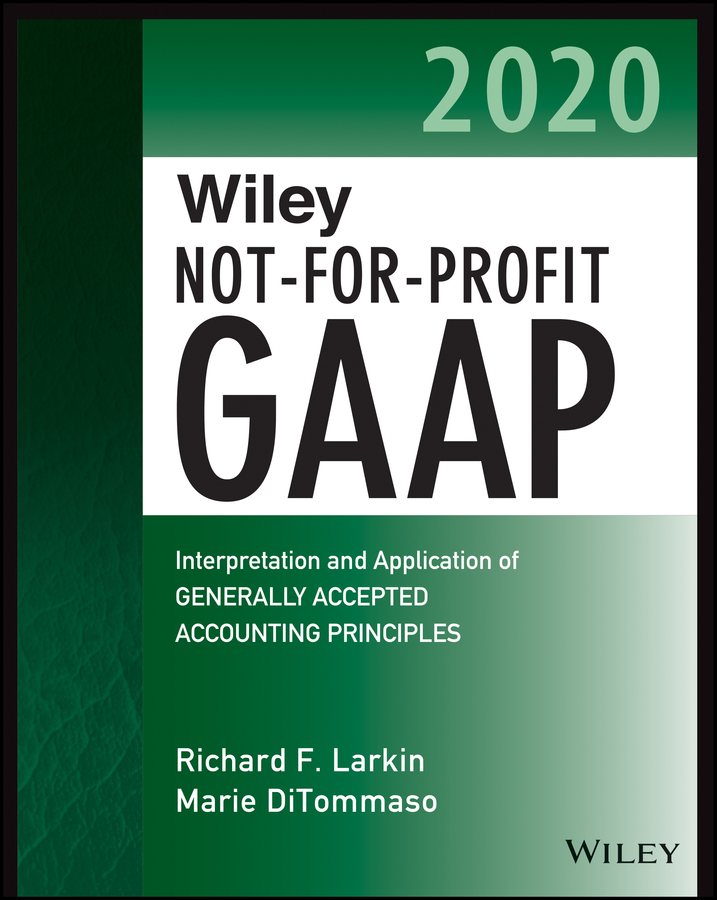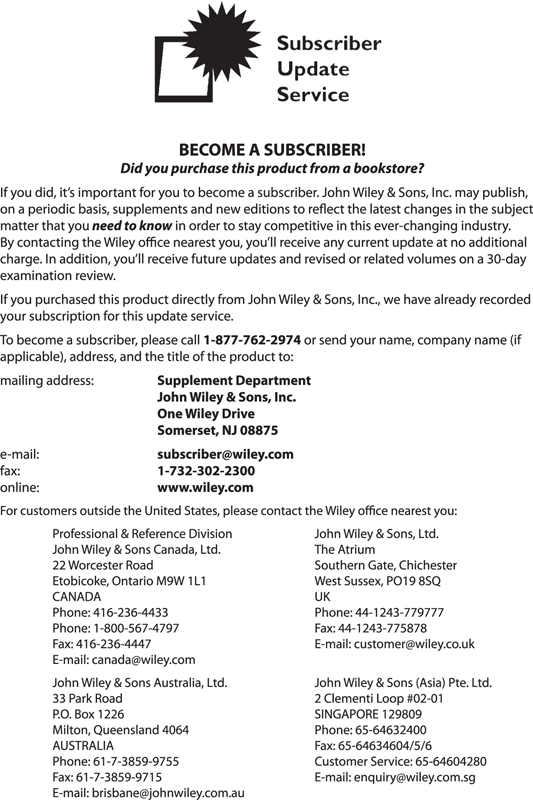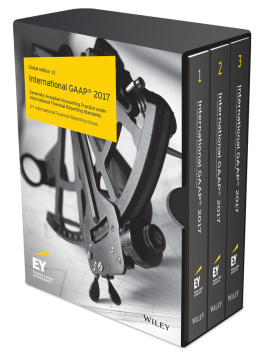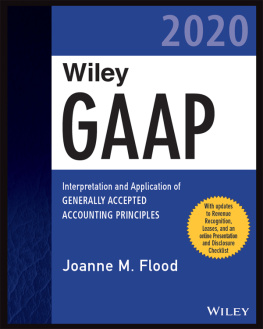
Table of Contents
List of Tables
- Chapter 2
- Chapter 3
- Chapter 4
- Chapter 5
- Chapter 6
- Chapter 7
- Chapter 8
- Chapter 9
- Chapter 13
- Chapter 14
- Chapter 17
- Chapter 18
List of Illustrations
- Chapter 18
Guide
Pages


Wiley Not-for-Profit GAAP 2020
Interpretation and Application of GENERALLY ACCEPTED ACCOUNTING PRINCIPLES
Richard F. Larkin
Marie DiTommaso

Copyright 2020 by John Wiley & Sons, Inc. All rights reserved.
Published by John Wiley & Sons, Inc., Hoboken, New Jersey.
Published simultaneously in Canada.
No part of this publication may be reproduced, stored in a retrieval system, or transmitted in any form or by any means, electronic, mechanical, photocopying, recording, scanning, or otherwise, except as permitted under Section 107 or 108 of the 1976 United States Copyright Act, without either the prior written permission of the Publisher, or authorization through payment of the appropriate per-copy fee to the Copyright Clearance Center, Inc., 222 Rosewood Drive, Danvers, MA 01923, (978) 750-8400, fax (978) 646-8600, or on the Web at www.copyright.com. Requests to the Publisher for permission should be addressed to the Permissions Department, John Wiley & Sons, Inc., 111 River Street, Hoboken, NJ 07030, (201) 748-6011, fax (201) 748-6008, or online at http://www.wiley.com/go/permissions.
Limit of Liability/Disclaimer of Warranty: While the publisher and authors have used their best efforts in preparing this book, they make no representations or warranties with respect to the accuracy or completeness of the contents of this book and specifically disclaim any implied warranties of merchantability or fitness for a particular purpose. No warranty may be created or extended by sales representatives or written sales materials. The advice and strategies contained herein may not be suitable for your situation. You should consult with a professional where appropriate. Neither the publisher nor authors shall be liable for any loss of profit or any other commercial damages, including but not limited to special, incidental, consequential, or other damages.
For general information on our other products and services or for technical support, please contact our Customer Care Department within the United States at (800) 762-2974, outside the United States at (317) 572-3993 or fax (317) 572-4002.
Wiley publishes in a variety of print and electronic formats and by print-on-demand. Some material included with standard print versions of this book may not be included in e-books or in print-on-demand. If this book refers to media such as a CD or DVD that is not included in the version you purchased, you may download this material at http://booksupport.wiley.com. For more information about Wiley products, visit www.wiley.com.
Library of Congress Cataloging-in-Publication Data is Available:
ISBN 978-1-119-59595-3 (paperback)
ISBN 978-1-119-59599-1 (ePDF)
ISBN 978-1-119-59593-9 (epub)
Cover Design and Image: Wiley
PREFACE
Not-for-profit accounting is a specialized field of accounting that is receiving a growing level of attention. Over one million not-for-profit organizations currently operating in the United States have unique accounting and financial reporting issues that must be understood by a growing number of not-for-profit organization financial statement preparers and users.
The Financial Accounting Standards Board (FASB) has issued a series of statements and accounting standards updates that have significantly affected how not-for-profit organizations account for and report their activities and financial position. In 2016 the FASB issued an Accounting Standards Update that brought some important changes to certain aspects of the financial reporting model used by not-for-profit organizations. The FASB has also been active in many areas that affect a broad range of business and other organizations, including not-for-profit organizations. For example, financial instruments, intangible assets, pension obligations, fair value measurements, revenue recognition, and lease accounting have all been areas that have been impacted by recent FASB pronouncements. All of these topics are examined in detail in this book.
This book incorporates the codification of accounting standards into the FASB Accounting Standards Codification (the Codification or FASB ASC). The FASB essentially eliminated the statements on standards and other accounting literature and replaced them with the FASB ASC, which is updated by Accounting Standards Updates as the mechanism of promulgating changes in generally accepted accounting principles.
Despite the steady stream of accounting pronouncements that affect not-for-profit organizations, it's important to understand that accounting standards setting is influenced by a number of factors. For example, the Sarbanes-Oxley Act of 2002 created the Public Company Accounting Oversight Board (PCAOB), which has responsibility for setting auditing and other standards for public companies. Even with all of the new requirements and changes, the FASB continues to set generally accepted accounting principles for both public and nonpublic entities, including not-for-profit organizations. However, the FASB's agenda has focused more on issues affecting public companies, which has likely been influenced by the changes in the regulatory environment and issues highlighted by the numerous accounting shortcomings, and by the turmoil that was experienced in the financial markets. This changed a bit as the FASB established a Not-for-Profit Advisory Committee, which has reexamined the reporting model used by not-for-profit organizations and has made suggestions to the FASB to improve the financial reporting of these organizations. Some of these changes have been promulgated in an Accounting Standards Update issued in 2016. Additional changes may well result from future FASB deliberations. In addition, the American Institute of CPAs (AICPA), through technical practice aids, industry risk alerts, and accounting and auditing guides, continues to be an important contributor to the body of accounting principles used by not-for-profit organizations. It also significantly revised its accounting and audit guide for not-for-profit organizations in the recent past.
This book is designed as a complete and easy-to-use reference guide for financial statement preparers and users, as well as for auditors of not-for-profit organizations. It focuses on three key areas:
- Distinguishing characteristics of not-for-profit organizations and their financial accounting and reporting;
- Accounting areas that are unique to not-for-profit organizations;
- General areas of accounting that are applicable to the accounting and financial reporting of not-for-profit organizations.
This book would not have been possible without the hard work and efforts of many individuals. John DeRemigis and Pam Reh contributed greatly to the production efforts over many years. Sheck Cho has ably taken over those duties. The authors are greatly appreciative of their efforts as well as those of the current editorial and production teams.
Next page







